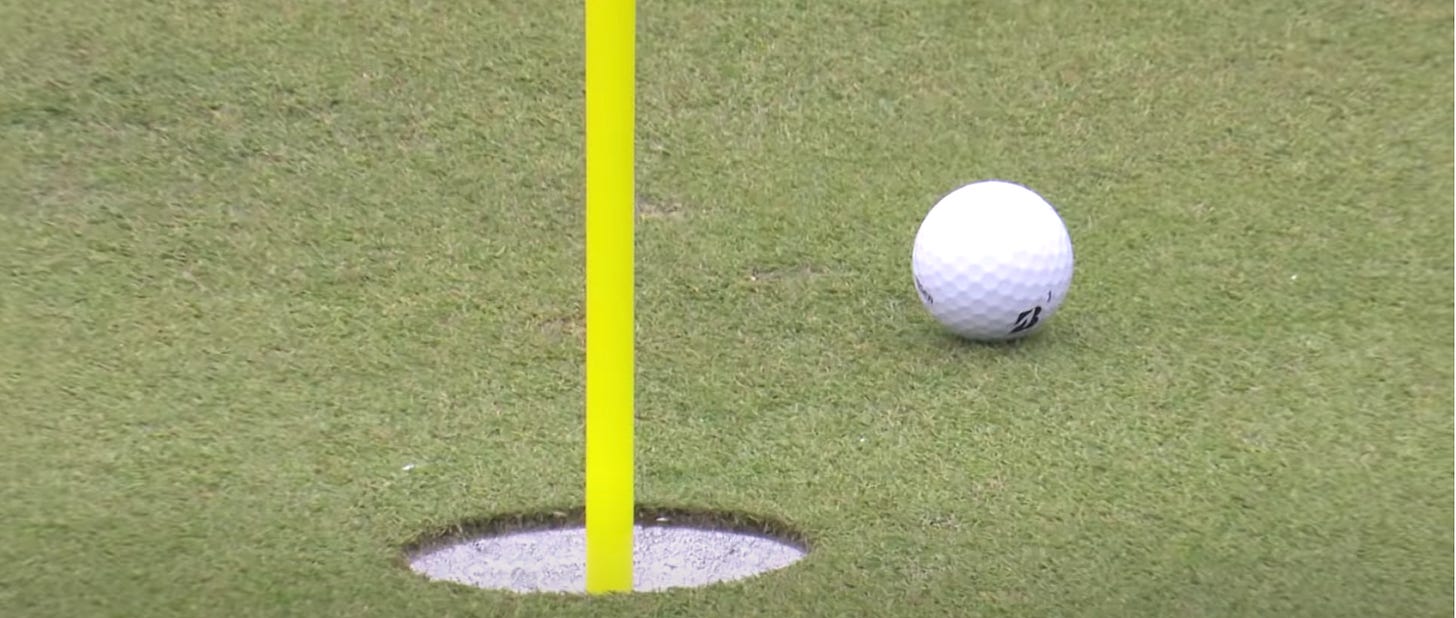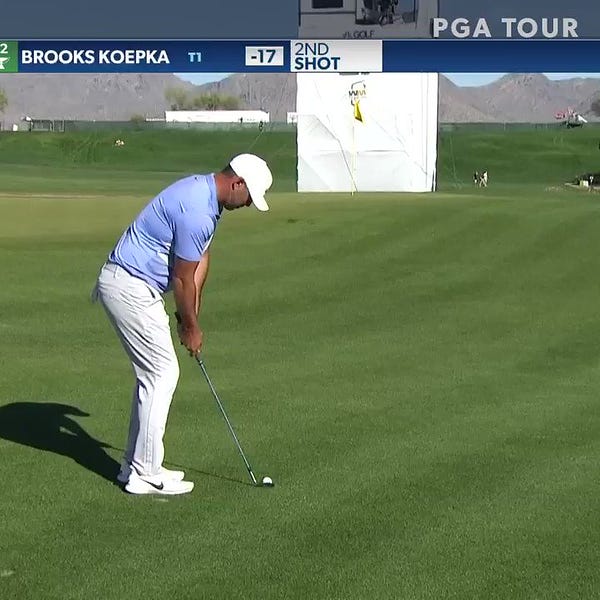Things to Watch at the Masters
Hole 1
There is no rule of golf course architecture that an opening hole must ease players into their rounds. At Augusta National, Hole 1 is no picnic. Over the last five years, over 25% of players have made bogey or worse on the first hole.
Hole 1 is an excellent example of a hole that’s stood the test of time. As I’ve written about before, due to the spin players generate with modern equipment and the height at which shots are launched today, advantageous angles are of little importance to scoring in men’s professional golf.
Another evolution in golf has been the increased rate of hitting driver off the tee. Informed by data analysis, golfers recognize the value of distance off the tee, even at the risk of missing additional fairways. Pursuit of distance off the tee leads to more approach shots with a wedge, shots that are high-arcing with high spin. Shots where angles matter very little. Thus, the farther players hit the ball off the tee, the less angles matter.
The simplest way to deter players from hitting driver off the tee is to narrow the fairway where shots hit with driver will end up. By steepening the penalty for inaccuracy at driver length, the risk-reward equation changes, increasing the value of hitting a shorter club off the tee.
Hole 1:
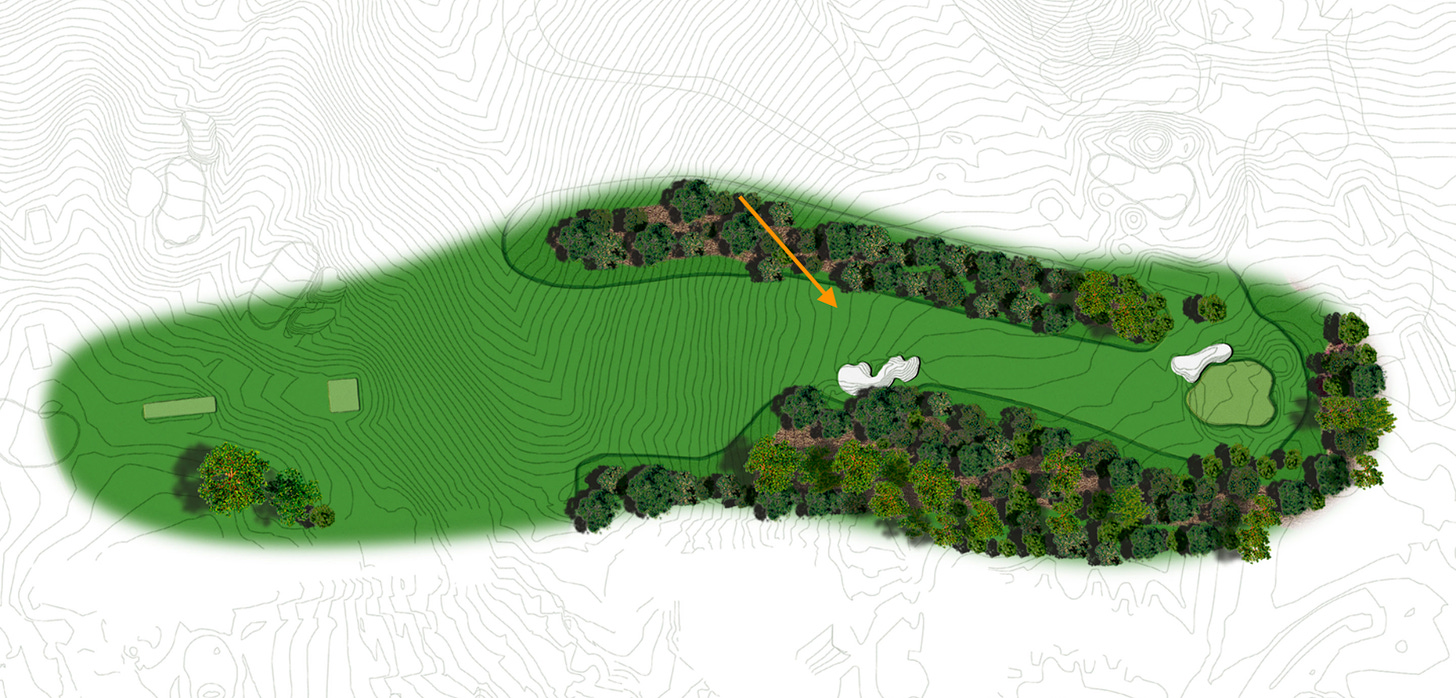
The left side of the hole seems inviting, but trees quickly encroach upon wayward shots down the left:
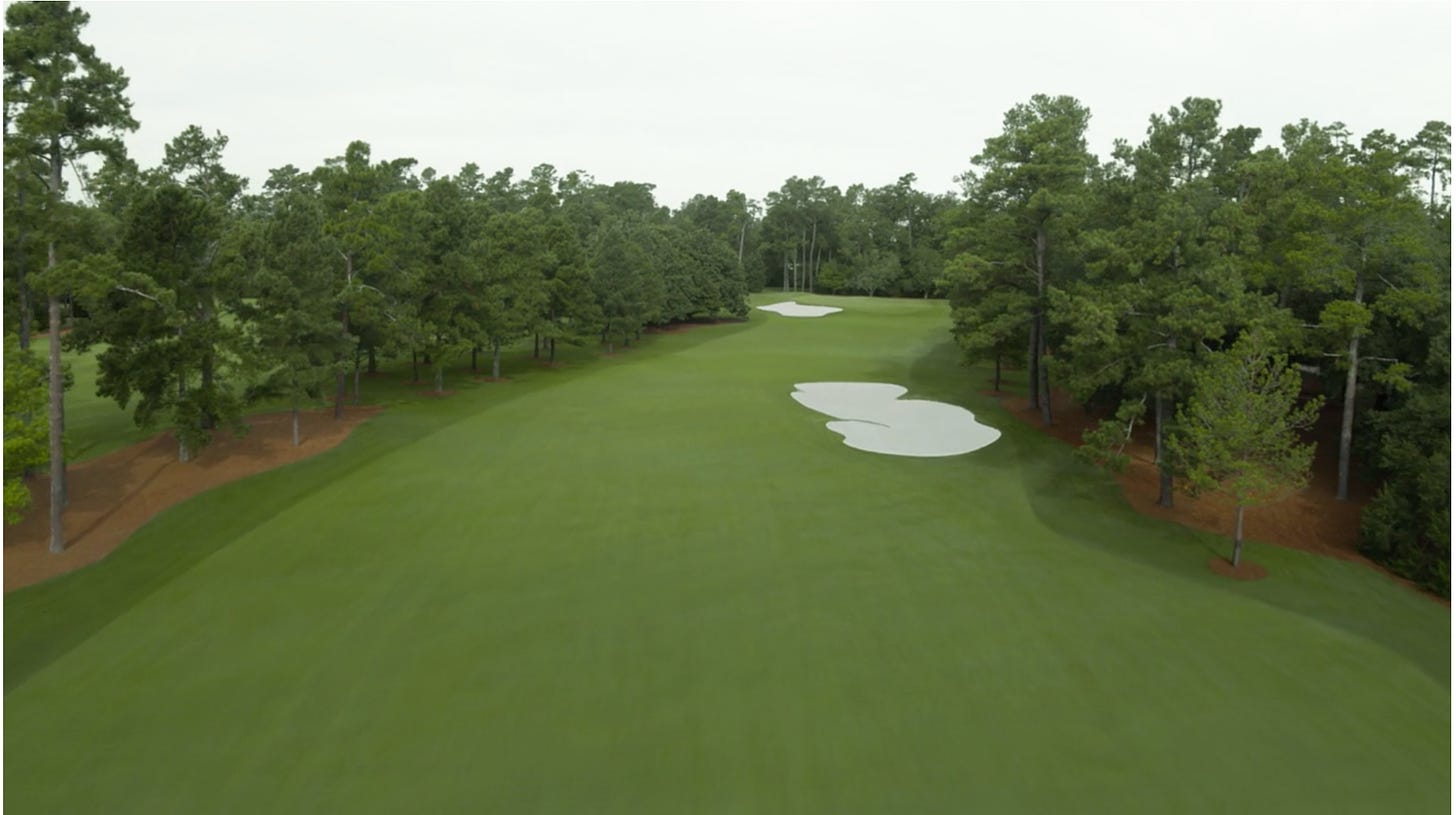
For my money, Hole 1 is one of the most intriguing opening holes in professional golf. The tee shot looks forgiving, but errant swings meet steep penalties (see Rory McIlroy in 2018 final round or Hideki Matsuyama 2021 final round). The severe contouring on the green is captivating too.
Watch how players attack this tee shot throughout the week. Bryson DeChambeau has been punished on multiple occasions after hitting driver errantly off the tee. I wouldn’t be surprised if he leaves driver in the bag on Hole 1 this year.
Increases in driving distance and advancements in modern technology have dulled the strategic element of professional golf. Through simple design elements, Hole 1 represents a strong strategic test right out of the gate.
Tiger Woods/Positioning
Just a year removed from a horrific car accident, Tiger Woods is expected to make his return to professional golf this week at the Masters. Enough uncertainty surrounds his current form that I don’t want to make predictions about how he’ll fare in the tournament. But…Tiger has a chance at competing.
Tiger has a chance at competing because Augusta rewards a player for finding proper locations, especially around the greens. Positioning is crucial. But what does that actually mean? Don’t all courses reward “positioning”? No, not equally.
I’d argue that severe contouring and fast greens are essential components of a golf course that rewards positioning around greens. And no other course on Tour boasts bold green contouring like Augusta’s. In slightly technical terms, the more contouring on a green, the more Expected Values vary from different positions around the green.
A short-sided shot that lands on a downslope on a fast green might carry an Expected Value of like 2.9 (basically means you have a 10% chance of making a 2) whereas a shot from the opposite side of the hole up into the slope on the green might carry an Expected Value of like 2.5. If you flattened the green, these numbers might turn into like 2.8 and 2.6 respectively, halving the reward of finding the appropriate location with your approach shot.
Tiger knows the most penal locations on the golf course, but in my opinion, the “course knowledge” narrative is overblown in media discussion. Players and caddies know where trouble lies. The challenge is hitting shots that avoid the trouble. And when they find a penal area, players with elite short games like Tiger Woods can escape without derailing their rounds.
Example: When the pin is in the middle left section of the ninth green, you do not want to hit your approach shot onto the back of the green. Look where Tiger had to aim his putt when he found the back of the green in the 2019 final round:
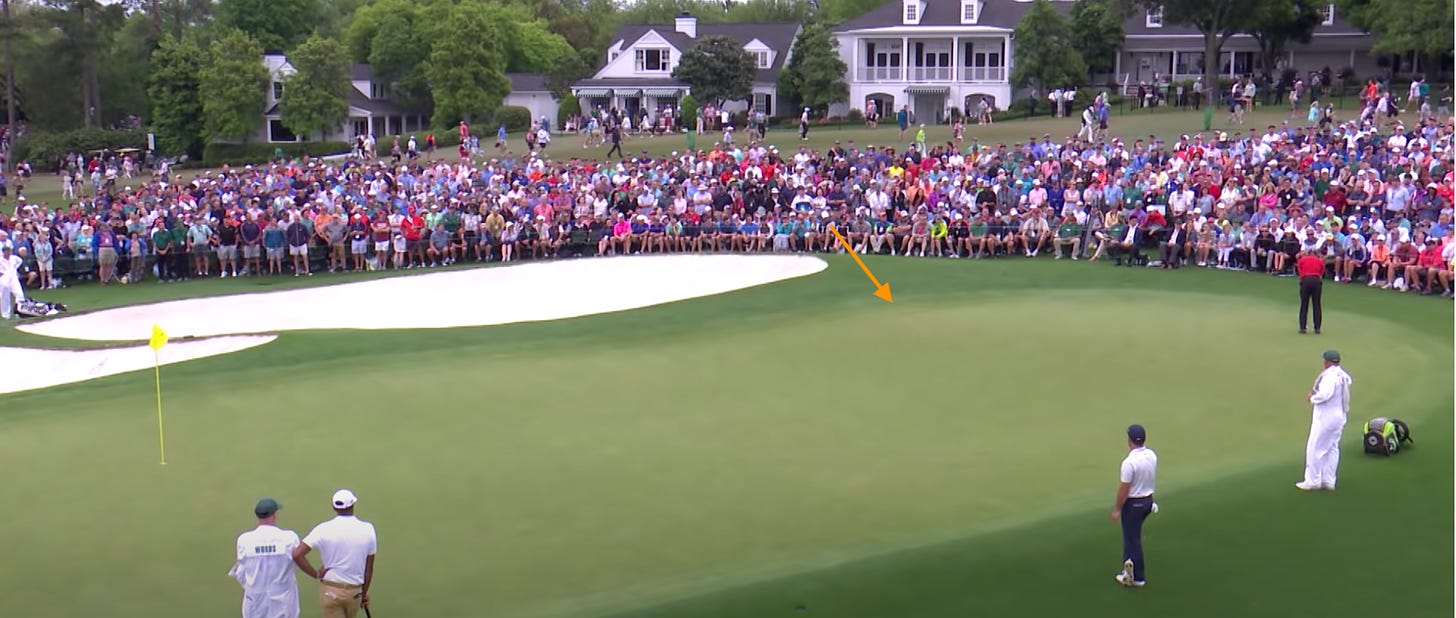
In one of the most underrated shots of his career, Tiger’s putt ended up here:
Most players would make a bogey from that location. Tiger’s elite short game allowed him to escape with par.
Last point on positioning: since Augusta has short rough throughout the course, players can control their approach shots even following an errant tee shot. This allows elite iron players like Tiger Woods to play to advantageous positions even from the rough.
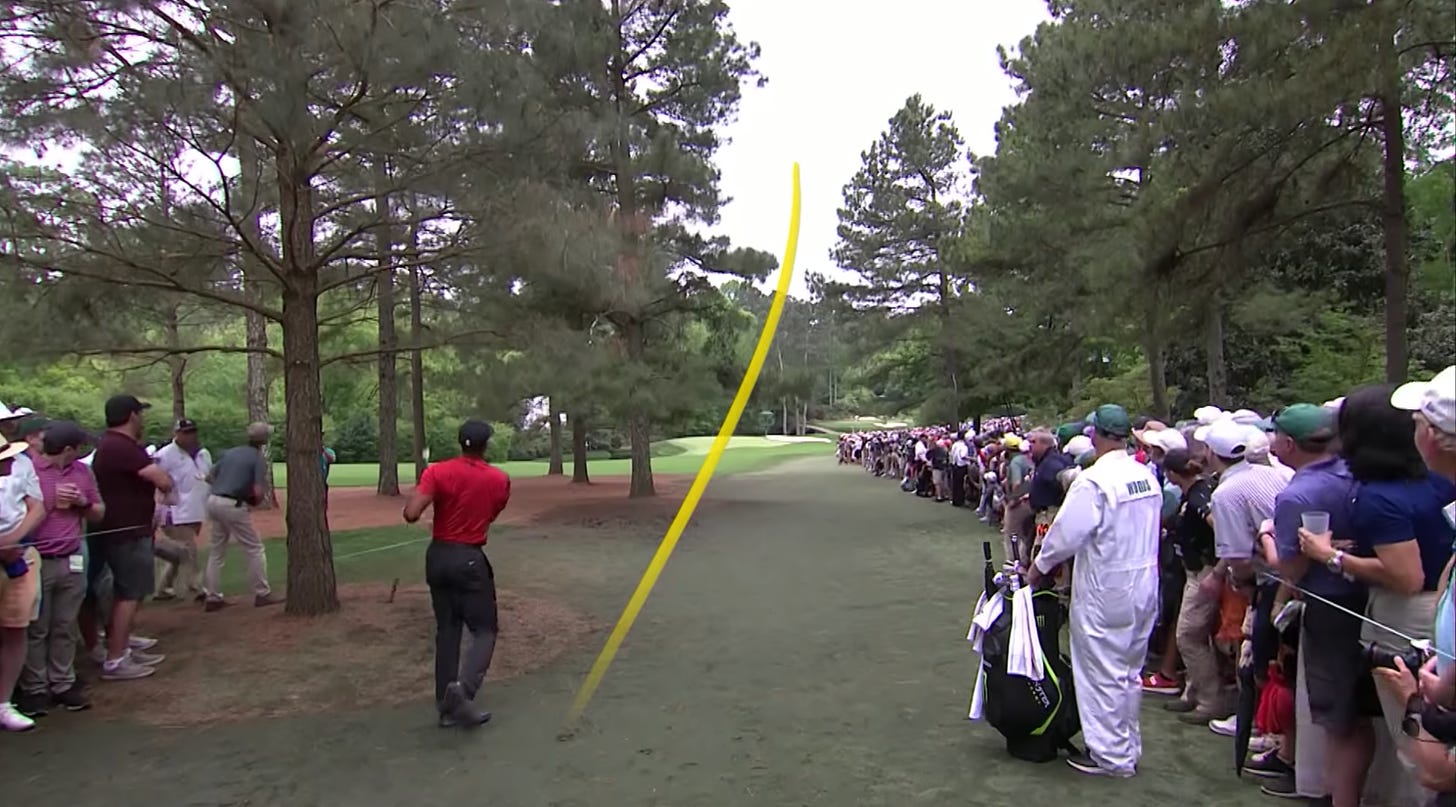
En route to his victory in 2019, Tiger hit the above shot onto the green. Imagine if his ball were sitting in thick rough. He’d have no chance of controlling a draw into the green.
I don’t know what Tiger is going to shoot on Thursday, but I wouldn’t doubt the craftiest iron player/chipper/putter of all-time on a course that rewards crafty play.
Justin Thomas
I have a very high opinion of the current state of Justin Thomas’ game and am optimistic about his chances at winning a green jacket this week. Nobody is hitting their irons better than Justin Thomas is right now, and he has one of the best short games in the world.
I’ll give you one key factor to watch this week with JT.
Hole 13 is one of the most important holes of the week. Over the past five years, the hole has yielded birdie or better about 50% of the time.
The hole requires a right-to-left ball flight off the tee:

Though he’s shown some flashes of adding a draw off the tee to his game, Justin Thomas’ preferred shot shape off the tee is a cut. Historically, this is a tee shot that has given Justin trouble. He’s often found the pine straw right of the fairway.
Thomas has played the hole 24 times, and he’s made birdie or better only nine times. He has also made bogey or worse five times, including a triple bogey in last year’s third round.
Relative to the field, Hole 13 has been Justin Thomas’ worst hole by a wide margin. On average, he has lost more than 0.25 strokes per attempt to the field on Hole 13. To win a high-quality golf tournament, you generally need to gain at least 0.20 strokes per hole on the field.
If Justin can improve his performance off the tee on Hole 13, he’ll drastically elevate his chances of winning the tournament.
From my perspective, it’s the most interesting player/hole combination to observe this week.
Koepka/Chipping
As brought up by Shane Bacon on the most recent episode of The Fried Egg Golf Podcast, elite chipping is a necessary ingredient to strong performance at the Masters. Players will face demanding shots from around the greens all week. Well-struck pitch shots are often the difference between getting up-and-down or losing strokes to the field. The second shot on Hole 3 and the third shots on Holes 2, 8, and 11 are prime examples.
It’s no accident that the best chippers in the world - Patrick Reed, Jordan Spieth, Justin Thomas, Cam Smith, etc. - have impressive track records at Augusta. I’d include Brooks Koepka on that list as well:
Brooks Koepka checks out at Augusta for many of the same reasons as Justin Thomas. Each player is long off the tee, hits elite irons, and can hit short game shots from tight lies as well as any other players in the world.
Koepka deserves more credit for his short game, and this week presents an opportune time for him to showcase his short game prowess to the world.
I’ll be pretty Twitter active for the Masters, so feel free to reply “Great point, I agree!” to my tweets throughout the week.
Feedback/Contact
Twitter: @JosephLaMagna
Email: Joseph.LaMagnaGolf@gmail.com
Other Recent Content
I’m a huge fan of Ethan Strauss’ newsletter and enjoyed his recent post on young athletes and mental health
Actual good reporting:
More to come on this but we LOVE it:

Lol:
Alvarado has found an edge. Keep pounding the edge until it goes away, Jose:
I enjoyed this thread of writing tips. This one stood out to me:

I’m sorry I wrote you such a long newsletter. It’s Masters week.



